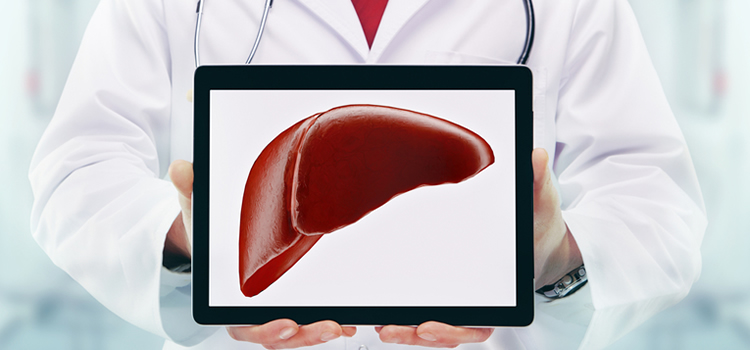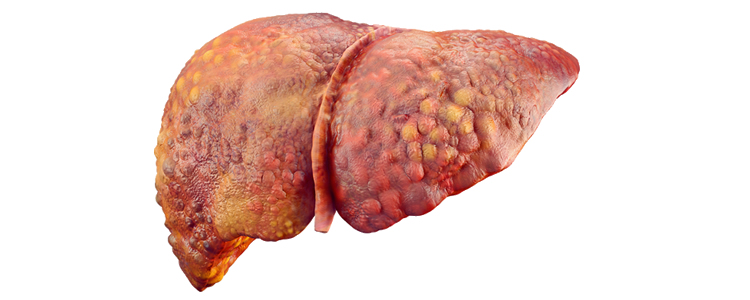LET YOUR LIVER LIVE and LOVE IT
Just like in a relationship, there is give and take. In the human body, there is one loyal organ that does give you a lot of functions… and you cannot just take it for granted.

Your liver is the largest organ inside your body. Live it up Liver! On the average, an adult’s liver weighs about 3 pounds (approximately 1.4 kg). It is located at the upper right part of your abdomen.
It performs a lot of crucial tasks for you to live, these include:
- Production of bile (a greenish substance which helps to digest fat from your food) and cholesterol.
- Metabolizes nutrients (carbohydrates, protein, fats) and helps to store them (e.g. glycogen from glucose).
- Stores some vitamins (e.g. Vitamin A) and minerals (e.g. iron).
- Helps to produce/activate Vitamin D.
- Detoxifies blood, gets rid of harmful substances (like alcohol, ammonia, drugs).
- Breaks down old or damaged cells (e.g. red blood cell).
- Helps in blood clotting.
- Produces certain proteins for blood plasma.
- And many others.
Don’t take your liver for granted! The above mentioned roles are just few of the reasons to let your liver live.
Letting your Liver Down.
What are some of the factors that can let your liver hurt?
-
Heavy alcohol drinking
Excessive alcohol consumption may cause alcohol-related liver disease (Fatty liver, alcoholic hepatitis, cirrhosis) [1].
-
Cigarette smoking
Smoking brings three major hostile effects on the liver: toxic effects, immunological effects and cancer-causing effects [2].
-
Obesity
Obesity is the state wherein a person has abnormal or excessive fat accumulation in the body. Obesity is associated with non-alcoholic fatty liver disease (NAFLD) [3].
-
Too much sugar intake
Refined sugar and high fructose corn syrup are the big sources of fructose, which, when excessively present in the diet, can cause harmful consequence to the liver [4].
-
Contact with toxins/harmful chemicals
Chemicals that can affect the liver are carbon tetrachloride (dry cleaning solvent), vinyl chloride (used in plastics), herbicide and called polychlorinated biphenyls (industrial chemicals) [15]. Exposure to aflatoxin (from molds in peanuts, corn, contaminated meats) is associated with increased risk of liver cancer.
-
Medications
Statins (prescribed for high cholesterol levels), acetaminophen poisoning (common over-the-counter pain reliever), antibiotics (e.g. clindamycin) and other drugs are linked to liver injury [6].
-
Stress/Psychological distress
According to an article by The University of Edinburgh, “individuals who scored highly for symptoms of psychological distress were more likely to later die from liver disease than those with lower scores”[7].
-
Herbs
There are many herbs that are linked to liver damage, including, ephedra, kava, comfrey, etc [15].
-
Not getting enough exercise
Exercise helps to detoxify the body and it helps your liver, too. It also helps you to prevent being overweight/obese by increasing your physical activity and burning calories. The American Heart Association recommends 150 minutes of moderate exercise (e.g. walking, jogging, and swimming) per week.
-
Unsafe / unhealthy habits / practices
Sharing of needles, unsafe sex, not getting immunization vaccines, ingesting food and water from unclean sources can increase your risk of contracting diseases like hepatitis (inflammation of the liver).

A Sad Liver Story
Not loving your liver and just letting it down has major consequences. As what happens in some relationships, it can either be saved or it can just fade away
What are the consequences of not loving your liver?
There are more than 100 types of liver diseases. Liver disease affects infants up to older adults. In the US, around 30 million people (or 1 in 10) have some form of liver disease [8].
According to the Centers for Disease Control and Prevention, there are 3.9 million people in the US who are diagnosed with liver disease.
Some common liver diseases include:
- Hepatitis (inflammation of the liver) which can be caused by virus, drugs and other factors. There are six types of Hepatitis (A, B, C, D, E and G). Hepatitis B and C have the highest possibility to lead to chronic liver impairment. Hepatitis A, B and C are caused by viruses. There are vaccines for Hepatitis A and B, though none for Hepatitis C [9].
Quick info:
- Hepatitis A can spread through contact with affected person’s stool, through unhygienic practices, sex and caring for someone who is sick with the disease [10].
- Hepatitis B can spread through an infected person’s body fluid, blood and semen. An infected mother can also pass the disease to her child at birth. Prolonged Hepatitis B condition can lead to liver cirrhosis (scarring of the liver) or liver cancer [11].
- Hepatitis C infection can last a lifetime and can also lead to liver cirrhosis, liver cancer or serious cases may warrant a liver transplant [12].
Note:
“There are 1.2 million people in the United States with hepatitis B… More than four million people (1.9 percent of the population) have been exposed to hepatitis C and most do not know that they are infected [9]”.
If you have symptoms of hepatitis like yellowing of the skin and eyes, fatigue, nausea, poor appetite, fever (however sometimes patients do not exhibit symptoms) or if you are in doubt, you can consult with your physician immediately.
2. Fatty liver disease is a condition where fats build up in the liver (and it makes up more than 5-10% of your liver’s weight) [13]. There are two main types of this disease:
(i) Alcoholic Fatty Liver Disease which is caused by excessive alcohol intake. The liver breaks down the alcohol that you drink and this process produces harmful substances that can damage liver cells [13].The next stages of alcohol-related liver disease are alcoholic hepatitis (swelling with destruction of liver cells, up to 35% of heavy drinkers reach this stage) and liver cirrhosis (non-living scar tissue replaces normal liver tissue; 10-20% of heavy drinkers develop this condition after 10 years or more of drinking) [1].
(ii) Non Alcoholic Fatty Liver Disease (NAFLD) is a condition in which fat builds up in the liver but is not related to alcohol use. It tends to develop in people with obesity, diabetes, high cholesterol or high triglyceride (fat) levels in their blood [14].NAFLD has two kinds: simple fatty liver where there is fat build up in the liver with no or little inflammation but does not lead to complications and nonalcoholic steatohepatitis (NASH) where there is inflammation and liver cell damage lead to cirrhosis or liver cancer [13]. NASH is the most prevalent liver disease in the United States [9].
3. Liver cancer is a cancer which starts in the liver cells (hepatocyte). The most common type is hepatocellular carcinoma (HCC).
4. Hemochromatosis is a condition where there is excessive iron in the body. It can lead to iron build up which can damage the liver and other organs like heart, pancreas. Without treatment, it can lead to cirrhosis. Primary hemochromatosis is an inherited genetic disorder.

| FAST FACT: |
| According to the Centers for Disease Control and Prevention 2015 statistics, chronic liver disease and cirrhosis is in the top 10 leading cause of death among 25-64 year olds in the United States [15]. |
Be in charge of your own health. Love your liver.
Watch out for the next article about prevention, some common treatments and recent study updates on liver disease.
References:
- American Liver Foundation. (2017, June 24). Alcohol-related Liver Disease. Retrieved from http://www.liverfoundation.org/abouttheliver/info/alcohol/
- Abdel-Rahman El-Zayadi. (2006). Heavy smoking and liver. World Journal of Gastroenterology, 12(38): 6098–6101. DOI: 10.3748/wjg.v12.i38.6098
- Fabbrini, E., et. al.. (2010). Obesity and Nonalcoholic Fatty Liver Disease: Biochemical, Metabolic and Clinical Implications. Hepatology, 51(2): 679–689. DOI: 10.1002/hep.23280
- Harvard University. (2011, September). Abundance of fructose not good for the liver, heart. Retrieved from https://www.health.harvard.edu/heart-health/abundance-of-fructose-not-good-for-the-liver-heart
- Mayo Clinic. (2016, October 4). Toxic Hepatitis. Retrieved from http://www.mayoclinic.org/diseases-conditions/toxic-hepatitis/symptoms-causes/dxc-20251585
- Herrine , S.K. (2017). Liver Injury Caused by Drugs. http://www.msdmanuals.com/home/liver-and-gallbladder-disorders/drugs-and-the-liver/liver-injury-caused-by-drugs
- University of Edinburgh. (2016, March 28). Stress Linked to Liver Disease Death. Retrieved from http://www.ed.ac.uk/news/2015/stressliver-190515
- American Liver Foundation. (2013, October 18). Liver Disease: The Big Picture. Retrieved from http://www.liverfoundation.org/education/liverlowdown/ll1013/bigpicture/
- Saint Louis University Liver Center. (2017). Liver Center – Liver Disease Facts. Retrieved from http://livercenter.slu.edu/index.php?page=liver-disease-facts
- US National Library of Medicine. (2017, August 14). Hepatitis A. Retrieved from https://medlineplus.gov/hepatitisa.html
- US National Library of Medicine. (2017, August 29). Hepatitis B. Retrieved from https://medlineplus.gov/hepatitisb.html
- US National Library of Medicine. (2017, August 29). Hepatitis B. Retrieved from https://medlineplus.gov/hepatitisc.html
- WebMD. (2017). Fatty Liver Disease. Retrieved from http://www.webmd.com/hepatitis/fatty-liver-disease#1
- American Liver Foundation. (2016, December 28). NAFLD. Retrieved from http://www.liverfoundation.org/abouttheliver/info/nafld/
- National Center for Health Statistics. (2016, October 6). Chronic Liver Disease and Cirrhosis https://www.cdc.gov/nchs/fastats/liver-disease.htm


